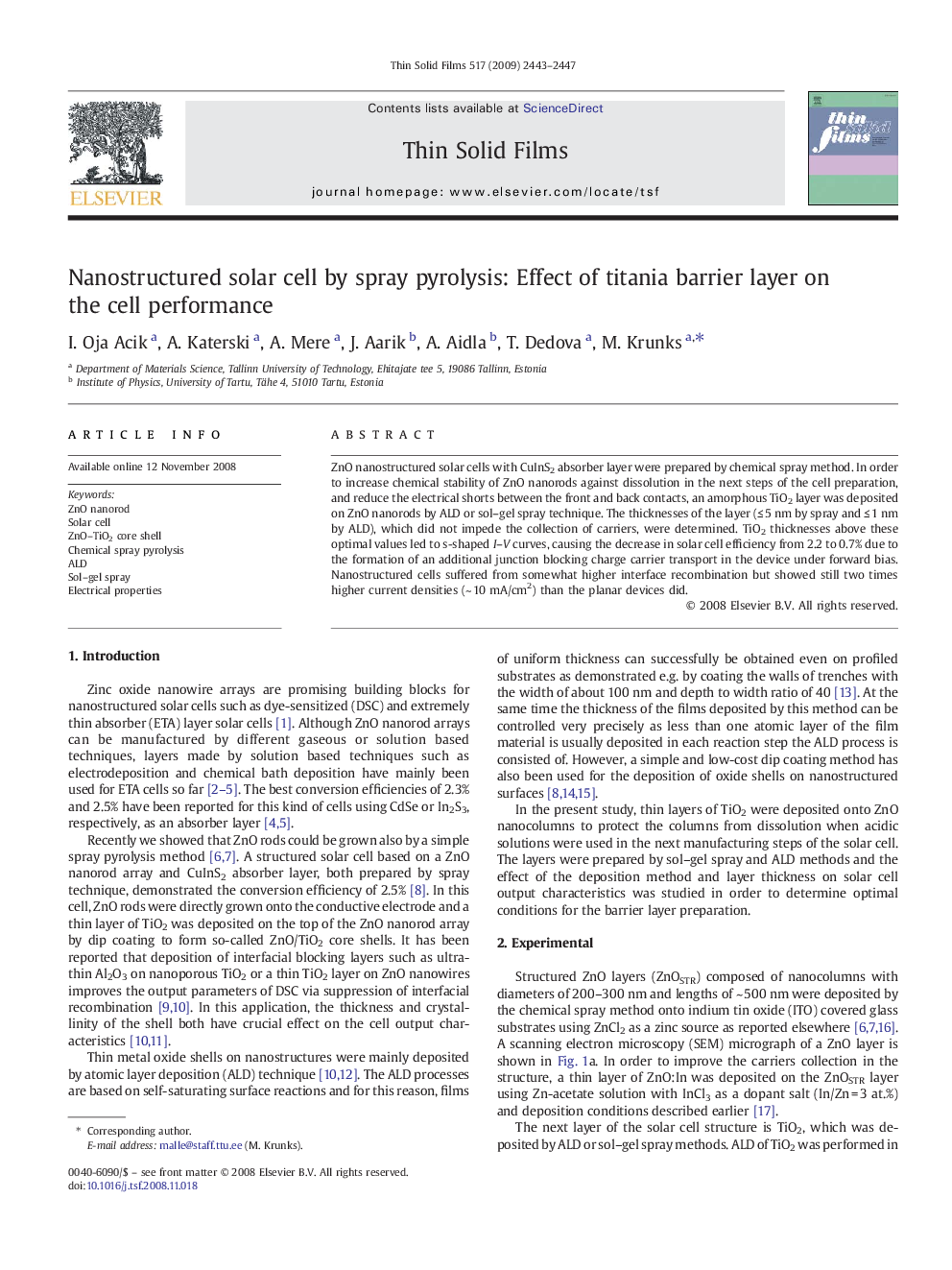| Article ID | Journal | Published Year | Pages | File Type |
|---|---|---|---|---|
| 1671215 | Thin Solid Films | 2009 | 5 Pages |
Abstract
ZnO nanostructured solar cells with CuInS2 absorber layer were prepared by chemical spray method. In order to increase chemical stability of ZnO nanorods against dissolution in the next steps of the cell preparation, and reduce the electrical shorts between the front and back contacts, an amorphous TiO2 layer was deposited on ZnO nanorods by ALD or sol-gel spray technique. The thicknesses of the layer (â¤Â 5 nm by spray and â¤Â 1 nm by ALD), which did not impede the collection of carriers, were determined. TiO2 thicknesses above these optimal values led to s-shaped I-V curves, causing the decrease in solar cell efficiency from 2.2 to 0.7% due to the formation of an additional junction blocking charge carrier transport in the device under forward bias. Nanostructured cells suffered from somewhat higher interface recombination but showed still two times higher current densities (~ 10 mA/cm2) than the planar devices did.
Related Topics
Physical Sciences and Engineering
Materials Science
Nanotechnology
Authors
I. Oja Acik, A. Katerski, A. Mere, J. Aarik, A. Aidla, T. Dedova, M. Krunks,
